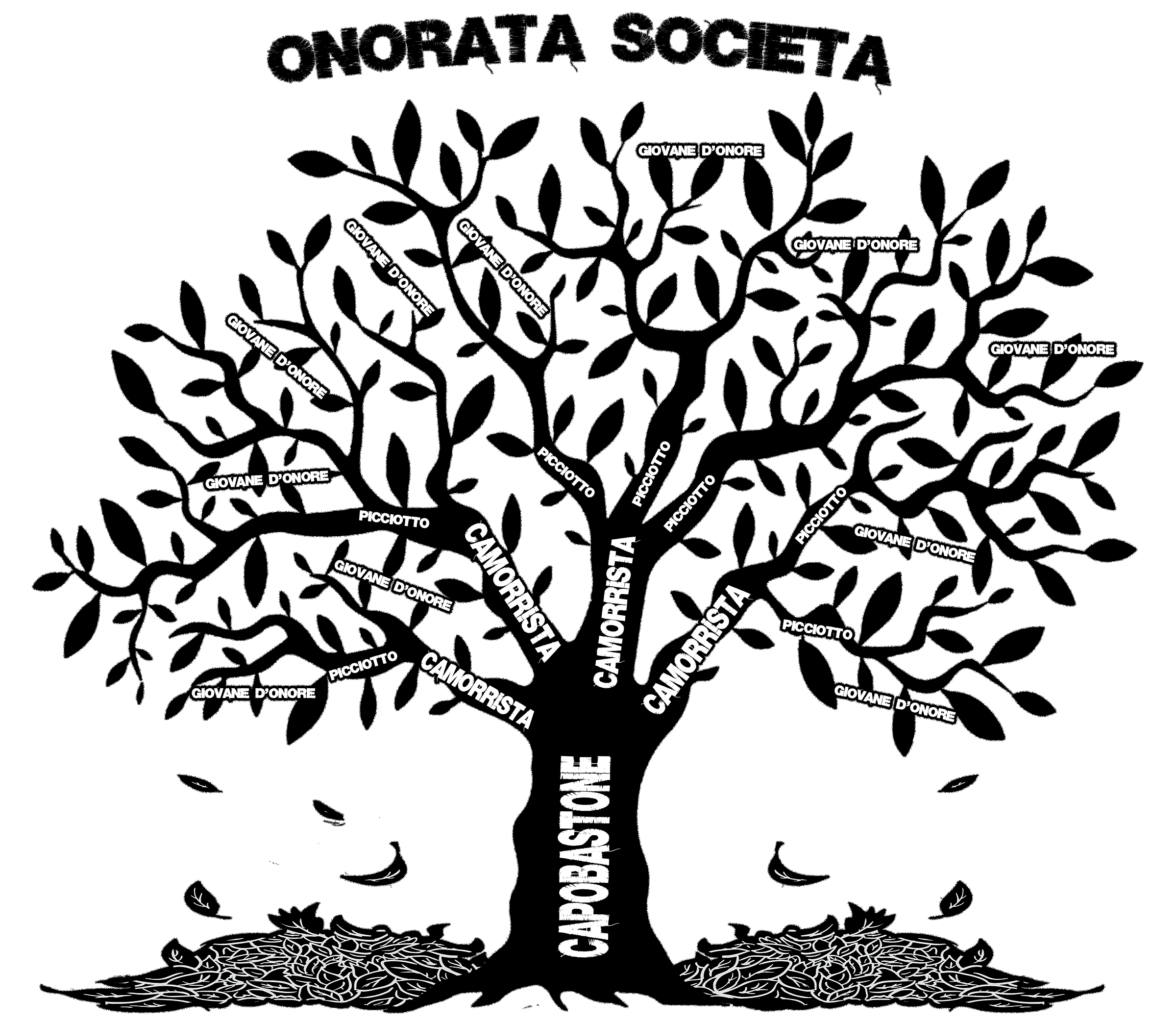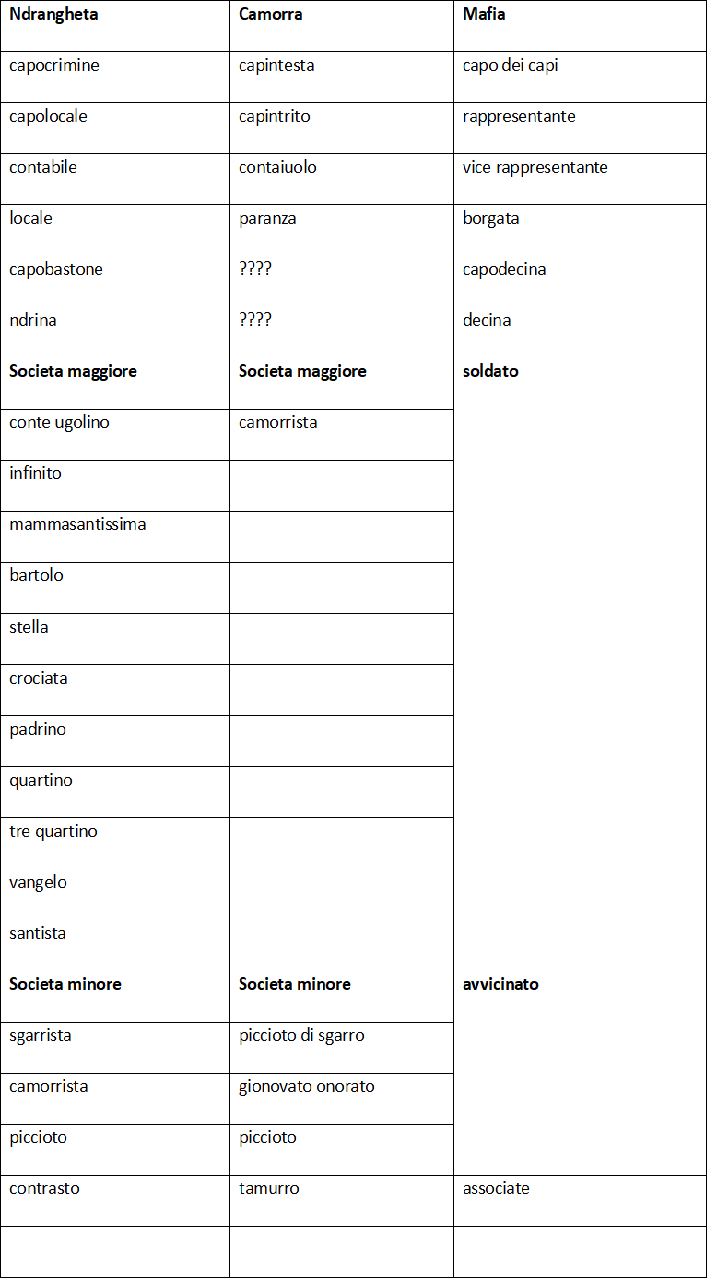Good job. It's confusing stuff and some elements are left up to the interpreter.
It's hard to compare the 19th century camorra to the 20th century 'ndrangheta to the mafia which has remained the same. As I said, I'm no expert on the modern 'ndrangheta so it's hard for me to elaborate from any authoritative position. I can compare the mafia to camorra though:
1 Boss of bosses was supreme ruler over the entire Mafia (in Sicily or in America). Camorra never had a supreme ruler. Capintesta was voted by local capintriti/capisocieta. There was a capintesta for Naples, Salerno, Terra di Lavoro, etc.
2 Capintesta might be best compared to the Mafia's mandamento. He controls his own group but was voted to be a rep for his and other local groups.
3 Capintrito is the same as caposocieta. It's a society boss over a district or prison room. In Naples there were 12 capintriti. They are the early version of 'ndrini. Comparing them to rappresentanti depends on one's interpretation, technically they headed their own groups but weren't in charge over an entire city and had no captains.
4 Underboss/Contaluolo, both of these are the official number 2 positions within mafia and camorra but their functions are different. Traditionally the Under was an aide meant to serve as a VP selected by the boss. The contaluolo was a voted upon position (like that of consig) and handled the financial aspects of the org. Each capintrito had a contaluolo as did the picciotti in the minor society. If you look at the modern camorra today, they still utilize accountants even though there is no longer a camorra society.
5 Da Giornata is arguably closer to the role filled by Underboss but lacked the authority of one.
6 Paranza was what the major society called their annual meetings. Chiorma was what the minor society called their annual meetings.
7 Borgata vs Locale... I don't have the answer for that, they're both different. They are arranged in the same fashion but ndrina bosses aren't like captains to the Locale Boss who has his own group. It might be more accurate to compare ndrina bosses to borgata bosses, except 'ndrina bosses dont have captains.
8 The Camorra had a governing body identified in the 1890's called mamasantissima, it wasn't created in the 70's by the 'ndrangheta.
9 To bring the ndrangheta into this comparison is to change the game to 3d chess. It's an evolved version of the original society. Like comparing a small plant to a fully grown tree. Actually that makes sense, here's some code confiscated by the calabrian camorra in america in 1927 (which also mentions the 3 Spanish knights:
“From this day on, it will be baptized the Tree of Knowledge. Behold the stem which must represent the leader of the Honorable Society. Behold the branches that must represent the arm of the Society. Behold the smaller branches of this tree which represent the Picciotti di Sgarro. Behold the flowers which represent the Giovani d'Honore. And all those leaves that you see on the ground are leaves that, not having the strength to keep their place upon the plant, fell, and they represent our comrades who have fallen into disgrace. If this tree is uprooted by a storm or by the police, this tree will revive more strongly and vigorous than before.”

